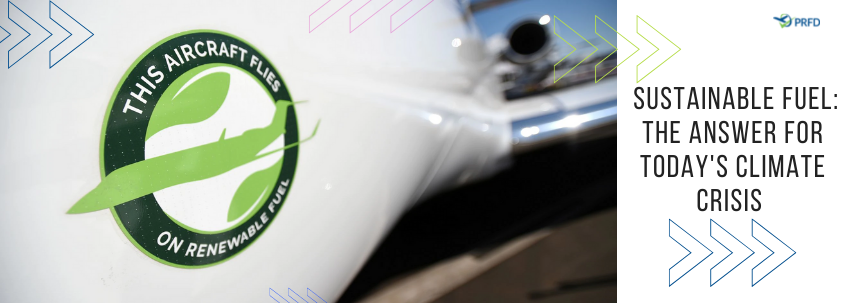More than 50 airlines including Delta, BP and Boeing, pledged on Wednesday to replace 10% of global jet fuel supply with sustainable aviation fuel (SAF) by 2030.
It is one of the boldest commitments yet to tackle the environmental impact of air travel and will require an exponential increase in the production of SAF, which currently accounts for only 0.1% of jet fuel used in commercial aviation.
Produced mainly from recycled food and agricultural waste, such as used cooking oil, SAF is a type of biofuel that cuts greenhouse gas emissions by 80% compared to conventional jet fuel, and is viewed as critical to reducing aviation’s fast-rising carbon emissions.
Given that electric and hydrogen-powered planes won’t be available for at least another decade, even for short-haul flights, SAF “holds one of the most important keys to decarbonizing aviation,” said Matteo Mirolo, aviation policy officer at Transport & Environment, a green campaign group in Europe.
SAF currently costs between two and eight times more than its fossil fuel-based alternative. In 2019, fewer than 200,000 metric tons were produced globally — less than 0.1% of the roughly 300 million metric tons of jet fuel used by commercial airlines, according to a November 2020 report by the World Economic Forum (WEF) and McKinsey, which has also signed up to the pledge as a business that relies on air travel.
The report found that if all publicly announced SAF projects are completed, volumes will reach just over 1% of expected global jet fuel demand in 2030 — a fraction of the target unveiled on Wednesday. “This is a fundamental step up in the industry,” said Anna Mascolo, president of Shell Aviation, which this week announced it would produce 2 million metric tons of SAF a year by 2025, or 10 times more than what was produced globally in 2019.
“We need to put more effort into decarbonizing the aviation sector,” Mascolo says, adding that “sustainability will have a price.” Who will pay is unclear. Germany’s Lufthansa says fewer than 1% of its passengers currently make use of an option to offset their CO2 emissions by paying more for their tickets to cover the extra cost of using SAF.
According to Mascolo, cargo operators, whose revenues are more resilient than passenger carriers, will play a key role in SAF investments, as will companies that want to offset emissions from business travel.
Fueling demand
“Carriers alone aren’t going to be able to carry the cost burden,” Uppink Calderwood said. “If they were to commit to purchasing the fuel they wouldn’t be able to sustain their business,” she added, saying that the purpose of the coalition is to distribute the risk and cost across the value chain.
A growing number of airlines around the world are already using SAF in their operations, but generally in small amounts blended with standard jet fuel. Over the past decade, SAF has been used on 360,000 commercial flights, the vast majority of which took place in the past five years, according to the International Air Transport Association (IATA).
Governments are also adopting policies to promote and even mandate the use of SAF, which experts say will be critical to boosting supply and demand. Norway and Sweden, for example, require that a minimum amount of aviation fuel sold in the countries must be SAF. SAF mandates have also been proposed in the United Kingdom and European
“In 2016 there were two countries that had a SAF policy, now there are 36 countries,” said Chris Goater, head of corporate communications at IATA. “More and more governments are starting to see the benefit of embracing SAF in different ways. Ultimately, that’s got to give momentum to some sort of global agreement,” he added.



